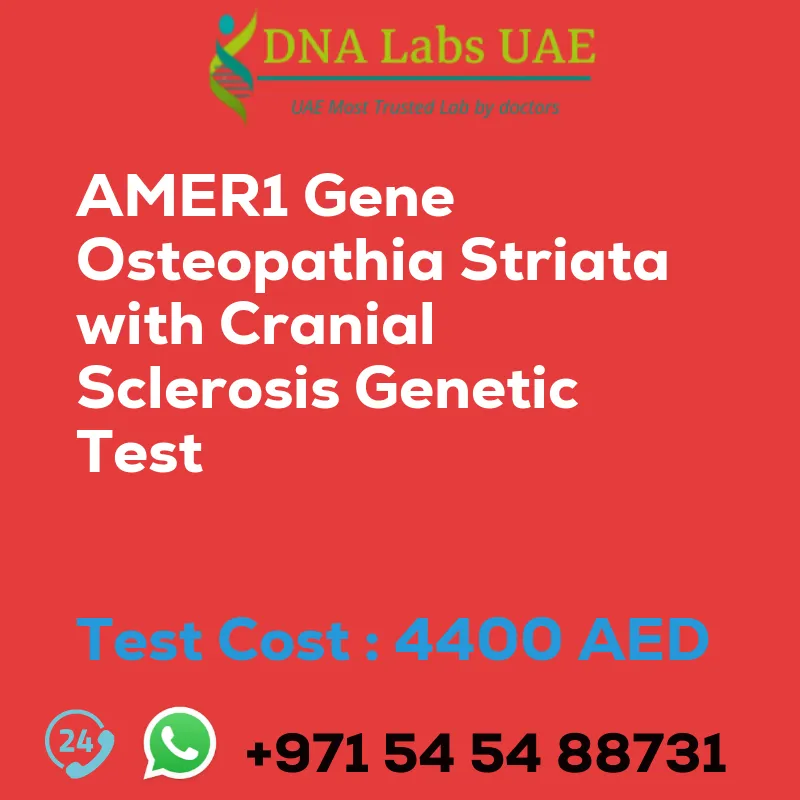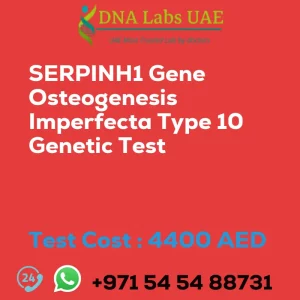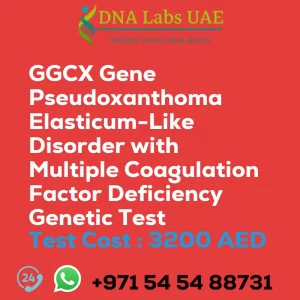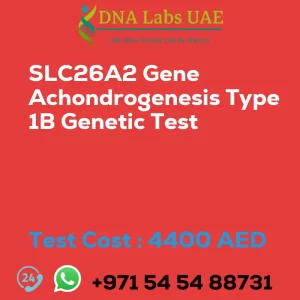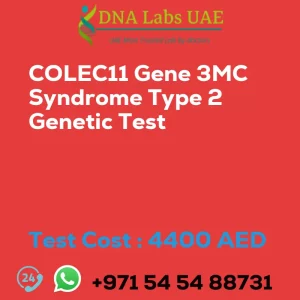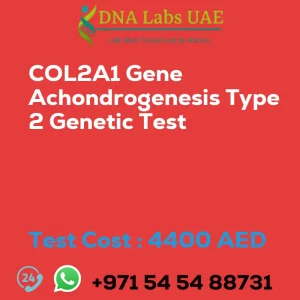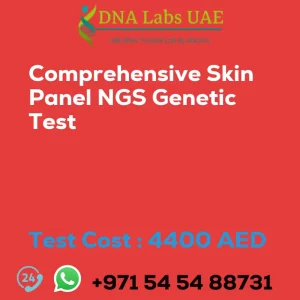AMER1 Gene Osteopathia striata with cranial sclerosis Genetic Test
Test Name: AMER1 Gene Osteopathia striata with cranial sclerosis Genetic Test
Components: Blood or Extracted DNA or One drop Blood on FTA Card
Price: 4400.0 AED
Report Delivery: 3 to 4 Weeks
Method: NGS Technology
Test Type: Osteology Dermatology Immunology Disorders
Doctor: Dermatologist
Test Department: Genetics
Pre Test Information: Clinical History of Patient who is going for AMER1 Gene Osteopathia striata with cranial sclerosis NGS Genetic DNA Test. A Genetic Counselling session to draw a pedigree chart of family members affected with AMER1 Gene Osteopathia striata with cranial sclerosis NGS Genetic DNA Test gene AMER1
Test Details: The AMER1 gene is associated with a rare genetic disorder called Osteopathia striata with cranial sclerosis (OSCS). This disorder primarily affects the skeletal system, causing abnormal bone growth and density, particularly in the long bones of the limbs and the skull. Individuals with OSCS may also have distinctive facial features and dental abnormalities. NGS (Next-Generation Sequencing) genetic testing is a type of DNA sequencing technology that can analyze multiple genes simultaneously. It is commonly used to identify genetic mutations or variations associated with various disorders, including OSCS. NGS testing can provide a comprehensive analysis of the AMER1 gene, allowing healthcare professionals to detect any mutations or variations that may be contributing to the development of OSCS. By identifying specific genetic changes in the AMER1 gene, NGS genetic testing can help confirm a diagnosis of OSCS and provide valuable information for managing the condition. It can also be used for genetic counseling and family planning purposes. It is important to note that genetic testing should be performed and interpreted by healthcare professionals who specialize in genetics or genetic counseling. They can provide guidance on the implications of test results and help individuals and families understand the potential risks and treatment options associated with OSCS.
| Test Name | AMER1 Gene Osteopathia striata with cranial sclerosis Genetic Test |
|---|---|
| Components | |
| Price | 4400.0 AED |
| Sample Condition | Blood or Extracted DNA or One drop Blood on FTA Card |
| Report Delivery | 3 to 4 Weeks |
| Method | NGS Technology |
| Test type | Osteology Dermatology Immunology Disorders |
| Doctor | Dermatologist |
| Test Department: | Genetics |
| Pre Test Information | Clinical History of Patient who is going for AMER1 Gene Osteopathia striata with cranial sclerosis NGS Genetic DNA Test. A Genetic Counselling session to draw a pedigree chart of family members affected with AMER1 Gene Osteopathia striata with cranial sclerosis NGS Genetic DNA Test gene AMER1 |
| Test Details |
The AMER1 gene is associated with a rare genetic disorder called Osteopathia striata with cranial sclerosis (OSCS). This disorder primarily affects the skeletal system, causing abnormal bone growth and density, particularly in the long bones of the limbs and the skull. Individuals with OSCS may also have distinctive facial features and dental abnormalities. NGS (Next-Generation Sequencing) genetic testing is a type of DNA sequencing technology that can analyze multiple genes simultaneously. It is commonly used to identify genetic mutations or variations associated with various disorders, including OSCS. NGS testing can provide a comprehensive analysis of the AMER1 gene, allowing healthcare professionals to detect any mutations or variations that may be contributing to the development of OSCS. By identifying specific genetic changes in the AMER1 gene, NGS genetic testing can help confirm a diagnosis of OSCS and provide valuable information for managing the condition. It can also be used for genetic counseling and family planning purposes. It is important to note that genetic testing should be performed and interpreted by healthcare professionals who specialize in genetics or genetic counseling. They can provide guidance on the implications of test results and help individuals and families understand the potential risks and treatment options associated with OSCS. |

